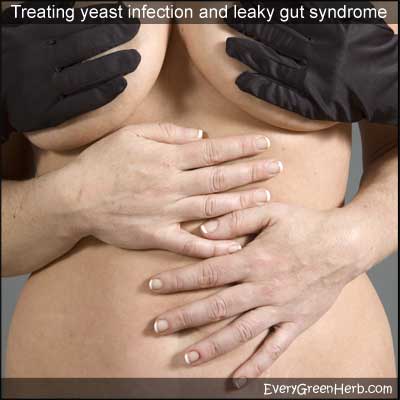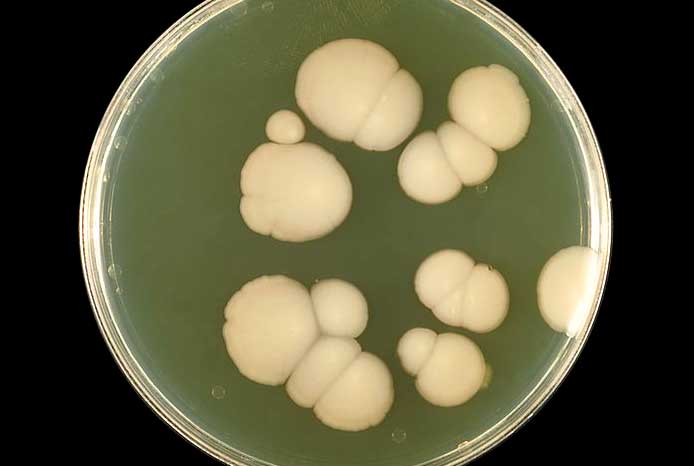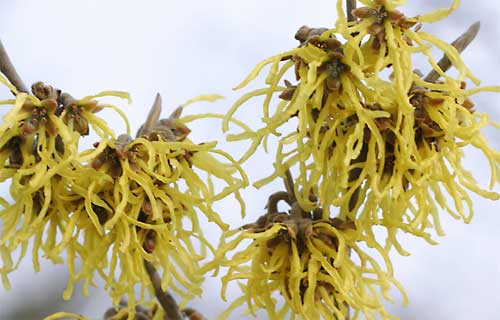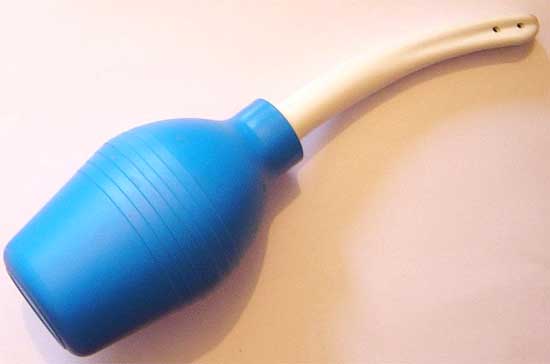Home remedies for yeast infections
Yeast and candidiasis infections occur when our natural intestinal or skin flora becomes unbalanced.

Overuse of sugar, artificial sweeteners, steroids, tobacco, antibiotics, chlorine, pesticides, and harsh chemicals can aggravate yeast infections.
Sometimes a weakened immune system is to blame. Thank God, natural remedies and herbs can help restore balance!
Treat yeast infection with herbs
Oregano, thyme, peppermint, yellowroot, barberry, chamomile, licorice, calendula, Oregon grape, chaga mushroom, and rosemary tea should be taken throughout the healing and recovery period.
Black walnut extract, which is known for killing parasites, is also recommended and shows excellent results. Read more about the medicinal properties of black walnut.
Evening primrose oil, licorice, echinacea extract, grapefruit seed extract, bromelain (from pineapples), red marine algae, zinc, aloe vera juice, and milk thistle extract may also bring relief.
Everyone is different so experiment to see what works best for you.
Keep yeast and fungal infections under control with natural remedies.
Try several different herbs and remedies to see what works best. Rotate the home remedies that work best. This keeps the yeast fungus from building resistance to your treatments.
Stress can aggravate fungal infections. Get lots of sleep, laugh often, and try to keep stress under control naturally. Sometimes stress and exhaustion can cause unpleasant symptoms that are relieved by watching a funny movie or taking a nap.

Yeast multiplies best in moist, warm places.
When it comes to vaginal yeast infections, fashion can be blamed. Wearing tight jeans, the use of nylon underwear, polyester yoga pants, and spandex tights reduce air flow and provide a moist place for yeast to multiply. Wear natural fabrics like cotton, linen, and flax so your skin can breathe!
Sudden changes in hormonal levels can also increase the risk of yeast overgrowth in some people.
All kinds of things can cause fungal infections and yeast problems, but the biggest cause is bad diet and poor digestion. When yeast and fungal infection strike, first improve your diet, then use herbs to restore balance.
Yeast infection is caused by fungus.
Candidiasis is a common problem known as yeast infection, thrush, or leaky gut syndrome depending on where the yeast overgrowth is located.
It is caused by overgrowth of a naturally occurring fungus. The fungus, Candida Albicans, is one of many organisms that live in the human mouth and gastrointestinal tract. Under normal circumstances Candida causes no harmful effects.
Sometimes yeast causes a host of serious problems. Yeast organisms have ability to invade surrounding tissue. They also produce biofilms which provide a safe haven and promote drug resistance. These properties make yeast infections hard to treat.
Other fungus include those that cause athlete's foot and ringworm. Read more about treating athlete's foot and ringworm with herbs.
Candidiasis can become invasive.
Problems occur when Candida switches from a non-invasive, sugar fermenting yeast to an invasive fungus with long, root-like structures.
In time, these rhizoids can penetrate intestinal walls, leaving microscopic holes that allow undigested food particles and bacteria to enter the body cavities and bloodstream.
Symptoms of yeast infection can vary.
Symptoms of Candidiasis include fatigue, depression, digestive problems, abdominal pain, indigestion, heartburn, sore throat, white coating on the tongue, cough, sinus problems, bad breath, itching, headaches, skin rashes, and re-occurring vaginal yeast infections with milky discharge.

Is candida a serious problem?
Candida is an increasing health concern, especially for people that are elderly, diabetic, pregnant, or immunity compromised in some way including anyone receiving antibiotic or steroid treatments.
It is a thin walled fungi that reproduces by budding. These creamy yellow organisms grow quickly and are mature within three days. Texture is pasty, smooth, wrinkled, or dull depending on exact species.
Candida is resistant to prescription drugs, but herbs show great promise in treating this smelly parasite.
Scientific studies
Yeast infections are very common in a hospitals and nursing homes where they are very difficult to control.
Candida yeast infections can become life threatening when they switch from yeast form to hyphae form. The elderly, people with compromised immunity, and those with a catheter are especially vulnerable.
Several plants have been shown to help. They work by disrupting cell wall integrity, cell metabolism, and biofilm formation.
Studies show that yeast infections can be successfully treated with antimicrobial herbs, which are less toxic than over-the-counter and prescription drugs.
Some of the most promising plants include garlic, berberine containing plants like yellowroot, cinnamon, oregano, and henna.
Studies suggest that candida albicans may ultimately be the cause of oral cancer. Scientists are looking to herbal remedies for yeast infections since there are currently no effective prescription treatments.
Studies show that certain herbs do have antifungal activity towards candida. Herbal extracts of henna, ashwagandha, turmeric, lemongrass, and ginger showed best results for inhibiting and controlling growth in the mouth. These herbs are non-toxic and have few, if any, side effects.
Another herb recently recommended for treating candida is Australian cowplant (Gymnema slyvestre). It is especially useful when used in the early stages of infection since it keeps overgrowth from getting worse.
Treat yeast infection with diet changes.
If Candidiasis is suspected, a cleansing diet is recommended. Avoid all sugar, dairy products, vinegar, coffee, black tea, caffeine, colas, soda pop, alcohol, and artificial sweeteners.
Carbohydrates, preservatives, processed foods, smoked meats, dried fruits, pickles, cured meats, and yeasty breads should be limited to small portions.
Yogurt that contains lactobacillus acidophilus should be eaten daily. Raw garlic is also extremely beneficial. Learn more about the healing properties of garlic.
Fresh vegetables including onions, ginger root, cabbage, broccoli, and sea veggies should be consumed in large amounts.
Diet should also include poultry, sea food, olive oil, eggs, brown rice, buckwheat, barley, millet, soy, tofu, rice cakes, cayenne pepper, pumpkin seeds, coconut, cinnamon, turmeric, and green drinks with live enzymes.
Using foot massage and reflexology to get rid of yeast infection
Foot massage can also help clear the body of a yeast over-growth. Concentrate on the instep area to stimulate the colon, liver, and gallbladder. When these organs are working properly, excess yeast doesn't stand a chance.

Herbal teas fight candidiasis.
Combine red raspberry leaf, olive leaf, walnut hull, dried garlic, and Pau d'arco in equal measures. Drink a cup of tea made from these herbs every day! This tea will heap get rid of all kinds of excess yeast and other parasites including liver flukes.
In this video, Herbalist Kareem shows us how to get rid of yeast and parasite overgrowths with homemade herbal capsules.

Yeast infection can be passed to sexual partners.
Yeast infection of the vagina is a common complaint among women, and it also affects a male's genitalia. Symptoms include itching, irritation, inflammation, unpleasant odor, discharge, swelling, and pain.
Causes may stem from long exposure to antibiotics, a weakened immune system, ph imbalance, and hormonal imbalances.

Sometimes spermicidal cream can aggravate a yeast infection and make it worse. The cream kills friendly bacteria that helps protect the vagina from disease causing micro-organisms, causing a yeast overgrowth.
Yeast infection can also spread to the urinary system and the rectum. It is also transferred easily from sexual partners.
Men get yeast infections, too. Be sure you are not passing yeast infections back and forth.
Sexual partners should be treated at the same time!
Herbal remedies for yeast infections

Many herbal remedies can help heal yeast infections in women.
Herbal douches include diluted solutions of witch hazel, calendula, tea tree oil, sage, myrrh, chamomile, white oak bark, vinegar, black walnut hull extract, barberry, cinnamon, mullein, rosemary, garlic, goldenseal, yellowroot, echinacea, raspberry leaf, blackberry leaf, grapefruit seed extract, chlorophyll liquid, or salt water.
Yogurt may also be beneficial.
Use of fluorinated cortisone cream is not recommended. This treatment causes thinning and atrophy of skin.
Diet can help fight yeast infection.
Women that suffer from reoccurring yeast infections need to drink unsweetened cranberry juice diluted with water and lots of healthy green drinks with live enzymes.
They should add garlic to the diet and consider taking vitamin B, vitamin K, vitamin C, vitamin E, and beta carotene supplements.
Drinking herbal tea is helpful. Try licorice, squaw vine, and alfalfa.
Avoid sugar, refined carbohydrates, yeasty breads, and mushrooms.

Yeast infection in the vagina and rectum
An effective vaginal treatment is a douche of diluted tea tree essential oil and calendula infusion in warm water.
Wash rectal area with a solution of garlic, echinacea, and myrrh after every bowel movement.
Make suppositories by combining 20 drops of tea tree essential oil, 10 drops of thyme essential oil, and a fourth cup of cocoa butter. Divide into 12 portions, roll into appropriate shapes, and keep in refrigerator until needed.
Use one every eight to twelve hours, or at bed time.
Treat thrush with herbal gargles
If thrush is a problem, disinfect toothbrush frequently and gargle with diluted tea tree essential oil or black walnut extract.
If skin or hair follicles develop candidiasis rash, apply calendula, aloe Vera juice, or garlic juice.
Candidiasis can also cause diaper rash. Some remedies are not safe for babies so it's best to consult with a healthcare professional in this case. If a healthcare professional is not available, keep the diapered area as dry as possible. Yeast can not live without moisture.
*Always consult with a healthcare professional before using any herbal remedy.
Sources:
https://www.ncbi.nlm.nih.gov/pmc/articles/PMC5422888/
https://www.ncbi.nlm.nih.gov/pmc/articles/PMC5628516/
https://microbiologynote.com/differences-between-yeasts-and-molds/
https://www.ncbi.nlm.nih.gov/pmc/articles/PMC6126409/
https://www.sciencedaily.com/releases/2013/09/130912131803.htm
Blessings to you and yours!
Thanks so much for reading my blog. Jan.

*Note - the information on this website has not been evaluated by the Food and Drug Administration.
© 2005-2024 website design and content by Janice Boling